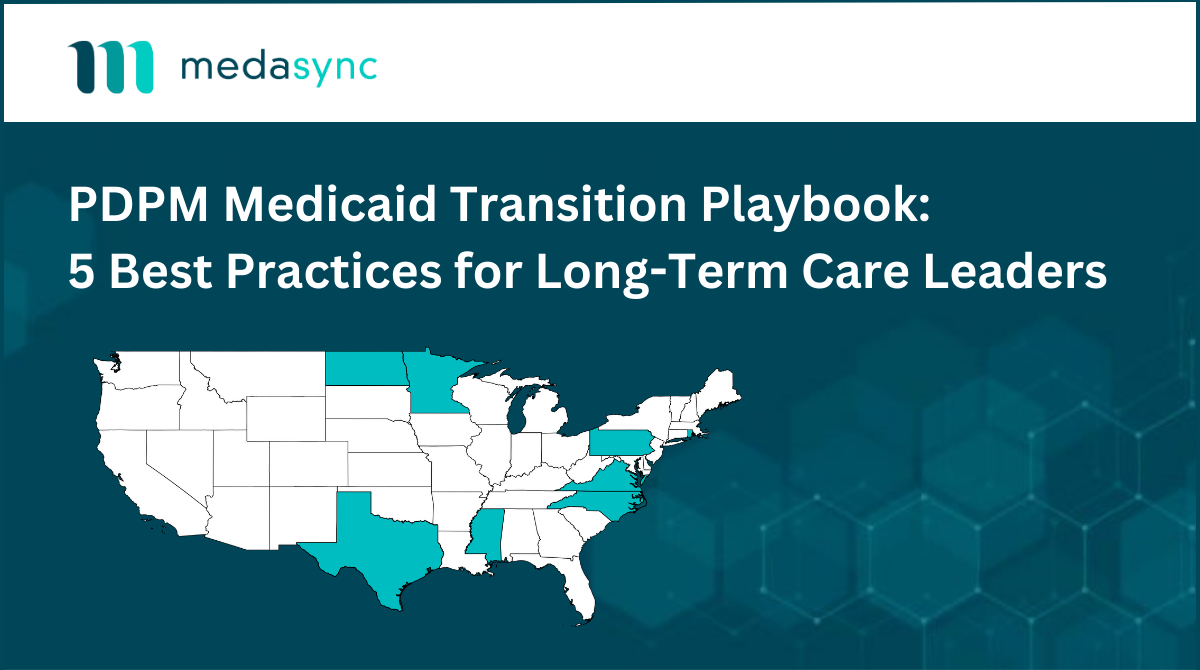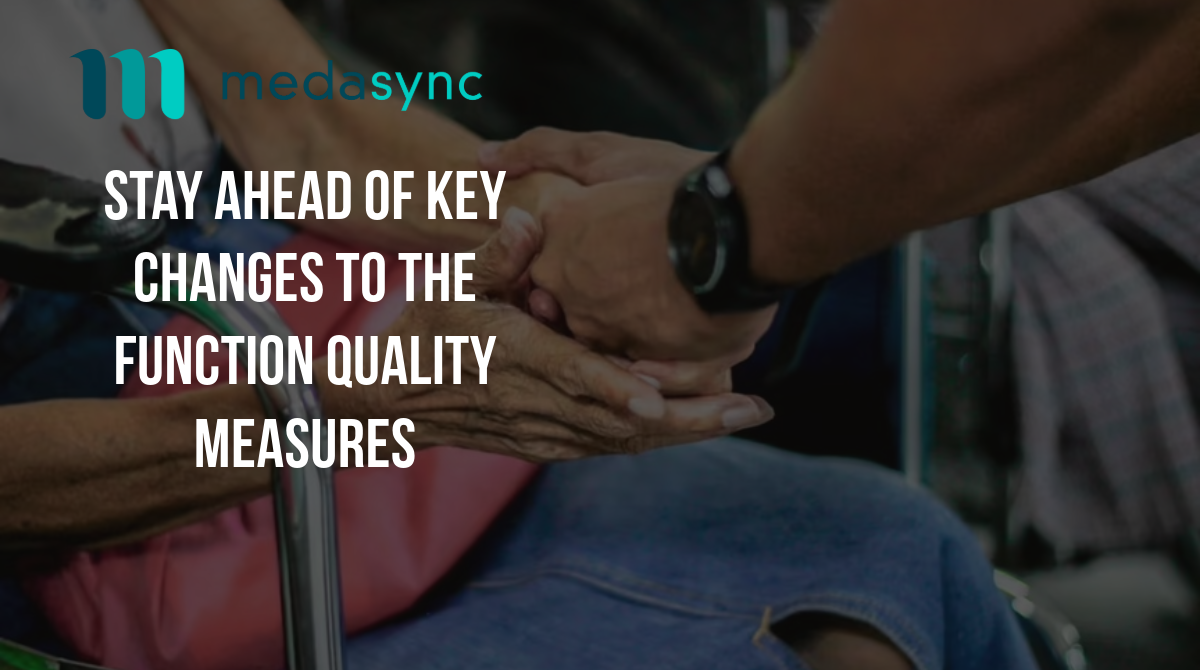Harnessing AI to Enhance Reimbursement Efficiency
The skilled nursing industry is inherently complex and data-intensive, where accuracy and efficiency are paramount. One area that demands exceptional precision is clinical data capture for SNF reimbursement. It requires gathering detailed information about a patient’s medical history, symptoms, treatment, and current condition to support the MDS or a Managed Care level. And, that’s all before we’ve even started our assessment. Historically, this process has been labor-intensive, error-prone, and heavily reliant on manual efforts. In fact, 73% of MDS coordinators report that researching patient charts and regularly reviewing documentation is their most time-consuming task. However, the growing adoption of Artificial Intelligence, specifically the use of Natural Language Processing (NLP) powered by machine learning (ML), presents a significant opportunity to streamline and transform this process, ultimately saving time and reducing the burden on staff while promoting critical thinking.
Key Challenges in Reimbursement Capture
Due to the specialized nature of long-term care, intricate regulations, and diverse resident needs, reimbursement capture is a highly nuanced and time-consuming task. Some of the key challenges include:
- Manual workflows: Led by MDS coordinators and supported by cross-functional teams, the reimbursement process often involves daily or weekly UR meetings, manual chart reviews, post-MDS audits, triple-checks, and more — all of which require considerable time, diligence, and effort from administrative staff.
- Complex, multi-payer environment: Skilled nursing facilities must navigate different rules for Medicare, Managed Care, Case Mix, Quality Measures, and OBRA/Care Planning. There are more than seven distinct manuals (e.g., RAI Manual, Quality Measures Manual, Medicare Benefit Manual) that MDS Nurses must reference for instructions, interpretations, and rules, beyond the extensive LTC regulations. It requires real expertise to act on these guidelines accurately across varying situations.
- Workforce constraints: Since the pandemic, MDS turnover rates have soared to nearly 60% annually. This has resulted in corporate reimbursement specialists covering multiple communities or open positions, while more nurses (both experienced and new) are being pulled into MDS roles. As a result, over 25% of assessment coordinators now have less than two years of experience, a 10% increase since the pandemic. Although software cannot resolve workforce shortages, it can provide systems to help new staff focus and ramp up more quickly.
- Disparate data sources: Clinical data in skilled nursing facilities is often scattered across multiple systems, such as electronic health records (EHRs), pharmacy records, lab reports, therapy notes, and billing systems. These fragmented data sources make it difficult to compile accurate and comprehensive patient information, which is crucial for appropriate reimbursement capture. The lack of integration between systems can lead to data gaps, inefficiencies, and increased chances of errors, further complicating this already challenging process.
Addressing these challenges requires a combination of improved training, better technology, enhanced communication, and a focus on accurate, thorough documentation. Investing in these areas can help nursing homes optimize their reimbursement capture and maintain financial stability while providing high-quality care to their residents.
How NLP and Machine Learning Can Help
Natural Language Processing (NLP), a branch of artificial intelligence, enables computers to understand, interpret, and even generate human language. When paired with machine learning (ML), NLP can analyze large volumes of unstructured data, such as clinical notes or physician orders, to extract valuable insights that support the clinical reimbursement team with tasks like preparing for the initial MDS assessment, setting strategic ARDs between assessment windows, and identifying discrepancies. Here’s how it works:
- Automated Data Extraction: NLP algorithms can be trained to extract critical information from the patient chart automatically, including patient history, symptoms, and diagnoses. By organizing and summarizing this data systematically, NLP significantly reduces the manual workload on healthcare providers and lowers the chances of human error.
- Enhancing Accuracy: Machine learning models learn from patterns in extensive datasets, allowing them to improve accuracy over time. For example, NLP can identify synonyms and variations in medical terminology, ensuring that accurate information is captured regardless of the terms used. This not only increases the precision of assessments but also helps maintain compliance with documentation standards.
- Facilitating Audits and Compliance: Machine learning models can be pre-trained with the specific rules for Medicare, Managed Care, Case Mix, and Quality Measures, enabling them to review the patient chart and assessment practices effectively. By identifying discrepancies or potential compliance issues, these models help healthcare organizations stay aligned with regulations, reduce the risk of errors, and maintain accurate reimbursement processes.
- Boosting Workflow Efficiency: By leveraging AI to handle tasks like reviewing vast amounts of clinical information, identifying inconsistencies, and summarizing data, NLP and ML allow staff to focus more on critical thinking and direct patient care. This technology streamlines workflows, reduces administrative burdens, and ultimately improves overall efficiency for clinicians.
NLP Backed by Machine Learning vs. Simple Keyword Extraction
While NLP driven by machine learning offers advanced capabilities, it’s essential to distinguish it from simpler approaches like keyword extraction. Both techniques can be applied to clinical documentation, but they differ significantly in their effectiveness and the complexity of tasks they can handle.
Keyword Extraction
Keyword extraction is a basic NLP technique that involves identifying and extracting specific words or phrases from a text. This method is relatively straightforward and can be useful for tasks like identifying commonly used medical terms in clinical documentation. However, keyword extraction has several limitations:
- Lack of Contextual Understanding: Keyword extraction does not understand the context in which a word or phrase is used. For example, the phrase “no s/s of pneumonia” might be mentioned in a nurse note, but that doesn’t mean it’s relevant to the current assessment. Simple keyword extraction might inaccurately flag this as a current issue because it’s not interpreting the full context of the phrase.
- Inability to Handle Synonyms: Medical language is full of synonyms and variations. Keyword extraction may miss relevant terms if they are not exact matches, leading to incomplete or inaccurate output.
- Prone to False Positives: Since keyword extraction does not consider the surrounding text, it can easily lead to false positives. For instance, a mention of “assess for sob while lying flat” could be mistakenly flagged as the patient actually being short of breath while lying flat as opposed to a routine assessment to determine its presence.
NLP Backed by Machine Learning
In contrast, NLP powered by machine learning offers a far more sophisticated approach to language processing:
- Contextual Analysis: Machine learning models can understand the context in which terms are used, reducing the likelihood of errors. For example, they can distinguish between an order to assess a patient’s oxygen saturation versus the application of continuous oxygen as well as also understand if that order for oxygen is reimbursement sensitive given the insurance plan.
- Handling Synonyms and Variations: NLP models trained on medical data can recognize different ways of expressing the same concept, ensuring that all relevant information is captured regardless of the terminology used.
- Learning and Adaptation: Machine learning enables NLP systems to continuously improve their performance by learning from new data. As the system processes more clinical information, it becomes better at recognizing patterns and making accurate predictions.
- Streamline Complex Understanding: Advanced NLP systems backed by ML can be integrated with the Electronic Health Record (EHR) and pre-trained with reimbursement sensitive rules unique to a providers insurance environment. This offers clinicians real-time assistance, automatically suggesting information or alerting them to missing details.
Conclusion
The integration of Natural Language Processing (NLP) and Machine Learning (ML) into skilled nursing workflows has the potential to revolutionize clinical data capture and reimbursement processes. By addressing challenges such as manual workflows, a complex multi-payer environment, workforce constraints, and disparate data sources, NLP and ML can bring unprecedented accuracy, efficiency, and compliance to the skilled nursing industry. Moving beyond basic keyword extraction, NLP backed by machine learning offers sophisticated language understanding, contextual analysis, and adaptability that can significantly reduce the administrative burden, minimize errors, and ultimately enhance patient care. As the industry continues to evolve, embracing advanced technologies will be crucial for operators to optimize reimbursement, maintain regulatory compliance, and ensure financial stability while focusing on delivering high-quality care to their residents.




